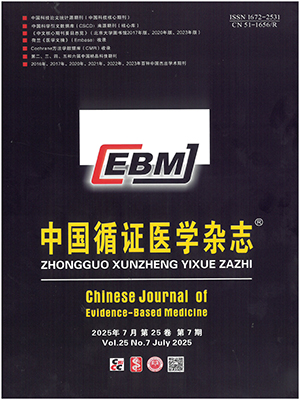| 1. |
Kristjuhan U. Postponing aging and prolonging life expectancy with the knowledge-based economy. Rejuvenation Res, 2012, 15(2): 132-133.
|
| 2. |
World Health Organization. The world health report. 1997.
|
| 3. |
李茜瑶, 周莹, 黄辉, 等. 疾病负担研究进展. 中国公共卫生, 2018, 34(5): 777-780.
|
| 4. |
GBD 2021 Forecasting Collaborators. Burden of disease scenarios for 204 countries and territories, 2022-2050: a forecasting analysis for the Global Burden of Disease Study 2021. Lancet, 2024, 403(10440): 2204-2256.
|
| 5. |
黄崇斐, 拜争刚, 吴淑婷, 等. 定性系统评价的撰写方法介绍. 中国循证医学杂志, 2015, 15(9): 1106-1111.
|
| 6. |
文煜, 武振宇. 疾病负担评价指标的实证分析—以伤残调整寿命年为例. 卫生职业教育, 2023, 41(7): 156-160.
|
| 7. |
黎倩欣, 周智华, 梁珊珊, 等. 大数据技术背景下疾病负担应用分析. 中国循证医学杂志, 2023, 23(3): 351-356.
|
| 8. |
孙秋芬, 吕筠, 李立明. 期望寿命相关指标的发展和应用. 中华流行病学杂志, 2021, 42(9): 1677-1682.
|
| 9. |
董惠玲, 吴炳义, 武继磊, 等. 健康预期寿命与伤残调整生命年内在关联与差异. 中国公共卫生, 2020, 36(11): 1645-1650.
|
| 10. |
苗鑫蕾, 张翔, 孟群. 沙利文法中健康期望寿命的测算指标. 中国卫生统计, 2019, 36(6): 906-908.
|
| 11. |
周尚成, 陈辉, 易卫兵. 应用伤残调整生命年评价疾病负担的方法学探究. 中国慢性病预防与控制, 2011, 19(3): 320-323.
|
| 12. |
詹一, 俞敏. 健康期望寿命的计算方法与应用. 疾病监测, 2011, 26(12): 1004-1008.
|
| 13. |
和沛森, 吴群红, 郝艳华, 等. 全球疾病负担测算指标: 伤残调整生命年的探讨. 中国卫生经济, 2011, 30(10): 78-79.
|
| 14. |
王建生, 金水高. 去病因健康调整期望寿命—一个新的疾病负担评价指标. 中华预防医学杂志, 2009, 43(8): 655-658.
|
| 15. |
王书平, 时景璞. 疾病负担评价常用指标及其应用. 辽宁医学杂志, 2007, (5): 321-324.
|
| 16. |
郭世成, 梁晓峰, 左树岩. 疾病负担研究—失能调整寿命年指标的应用. 中国计划免疫, 2006, (1): 72-75.
|
| 17. |
贾铁武, 周晓农. 疾病负担(DALY)的评价与应用. 中国寄生虫学与寄生虫病杂志, 2005, (5): 304-308.
|
| 18. |
王斌, 徐凌中. 衡量疾病负担的新指标—DALY. 中国卫生资源, 2002, (5): 230-231.
|
| 19. |
庄润森, 王声湧. DALYs及其在疾病负担与成本效果分析中的应用. 广东卫生防疫, 2001, (3): 19-23.
|
| 20. |
徐凌中, 柳丽华, 王永杰, 等. 效用指标的测量方法及其研究进展. 国外医学(卫生经济分册), 2001, 18(2): 88-92.
|
| 21. |
谢立, 舒丽萍, 施侣元, 等. 减寿分析评价指标研究进展. 国外医学(社会医学分册), 2000, (2): 58-61.
|
| 22. |
庞琳, 许群, 金水高. 健康寿命年—一个新的测量疾病负担的指标. 卫生研究, 1999, (2): 63-65.
|
| 23. |
夏毅, 龚幼龙, 顾杏元, 等. 疾病负担的测量指标—DALY(一). 中国卫生统计, 1998, (3): 53-54.
|
| 24. |
May AM, Struijk EA, Fransen HP, et al. The impact of a healthy lifestyle on disability-adjusted life years: a prospective cohort study. BMC Med, 2015, 13: 39.
|
| 25. |
张普洪, 武阳丰, 金水高, 等. 个体失能调整损失年的建立和探讨. 中华预防医学杂志, 2004, (2): 47-50.
|
| 26. |
Arnesen T, Nord E. The value of DALY life: problems with ethics and validity of disability adjusted life years. BMJ, 1999, 319(7222): 1423-1425.
|
| 27. |
吕繁. 疾病家庭负担和社会负担研究. 北京: 中国协和医科大学, 2000.
|




